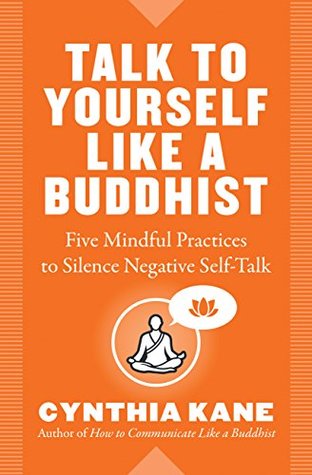More on this book
Kindle Notes & Highlights
by
Cynthia Kane
Read between
June 10 - August 11, 2025
our negative self-talk is the result of holding ourselves to impossible standards.
The Middle Path of Self-Communication is like medicine to treat the negativity and suffering that, as you will soon see, is largely self-created.
I worked with a woman who berated herself constantly about what she perceived as her inability to succeed in her chosen profession.
This means that the words we choose have an incredibly powerful effect
Simple statements like “nothing looks right on me today” to the more damaging “I can't do anything right” can affect our day in the same way that dark clouds or rain might affect an otherwise sunny day.
Are your words true, helpful, and kind? Or do you speak harshly to yourself?
Instead of just seeing the image in front of you (your body, as it is) without judgment, you now see “flaws” in your physical form instead. This is where the negative self-talk begins; fueled by these judgments, you begin to tell yourself things like “I look fat,” or “I look ugly.”
Seven Common Expressions of Negative Self-Talk, which represent some of the most typical judgments and negative self-talk that many of us experience.
Judgment and the resulting negative self-talk are at the root of our self-communication that is unkind, unhelpful, and untruthful—and this is how we create suffering in our own lives. Silencing
Listen Explore Question Release Balance
have found that anytime I am suffering, there is a good chance I am speaking to myself negatively in some way too.
many of us are so used to this hurtful way of communicating with ourselves that we may not even notice when we go into negative self-talk.
What judgment am I making? What story am I telling myself as a result of this judgment? What do I know to be true?
release old judgments. With the truth as your guide, you can start to let go of old judgments and beliefs and, in so doing, take away the supports that are holding up your negative self-talk.
Oftentimes the barrier to releasing old judgments is forgiveness, for yourself, for another, or for a situation.
my hope for you is that you learn to speak to yourself as if you were your own best friend instead of your own worst critic.
The master smiled, stopped pouring, and replied, “Can't you see that you are like the cup? How can I teach you anything when your mind is so full of ideas? You must empty your cup.”2
we let go of our old ideas about the way things are in order to find out how they actually are.
Mindfulness is a fundamental component of true listening and essential to freeing yourself from old judgments and self-talk. Mindfulness
with mindfulness, you become an observer or witness of whatever may come up inside of you, and this includes self-talk. Seen in this light, I define mindfulness as paying attention to what's happening in the outside world as well as what is happening in your inside world, all in the present moment.
Breathing exercises are particularly good for introducing you to the basics of mindfulness. For
To be mindful in Buddhist meditation means to witness and observe thoughts without attaching too much importance to them.
Anytime you find yourself feeling sad, angry, guilty, ashamed, afraid, stressed out, regretful, or any other negative emotion, let this be your cue to really listen to your inner dialogue mindfully.
The good news is that just the initial act of being mindful of your negative self-talk can lessen your suffering, because anytime you notice this type of unhelpful communication, it means you are less attached to it.
and bring compassion to yourself simultaneously. Bringing compassion to yourself will also help you support yourself as you move through the rest of the practices.
then think of all the times you have encouraged and supported them, especially when they were experiencing challenging times. Imagine what you would say to them if you heard them say something like, “I'm such a loser,” or “I'm so ugly,” or “I failed again.”
Perhaps you would say something like this to him or her: “It's okay, you are doing fine, please stop beating yourself up.”
the next time you notice yourself engaging in a negative diatribe. For most of us, this is a drastic shift in our dialogue with ourselves. We cause so much unnecessary suffering in our lives through the way we speak to ourselves.
Is it possible to get just as much done while cheering yourself on? In my experience the answer is that in fact, the cheerleader approach is even more effective than the drill sergeant, and it certainly makes for a happier existence during the process.
We use tools meant to help us as measuring sticks to hurt us, and we beat ourselves up if we don't practice perfectly. Be careful of this as you move forward in this journey.
Knowing how to mindfully listen to ourselves means we can start paying more attention to the ways we talk to ourselves negatively, knowing now that the goal is not to criticize, analyze, or become angry or disappointed at ourselves for it, but to simply observe and bring compassion to ourselves instead. For
Once you have done this, you can turn your attention to the practice of exploring the underlying beliefs and judgments that give rise to your negative self-talk in the first place. That is the focus of the next chapter.


